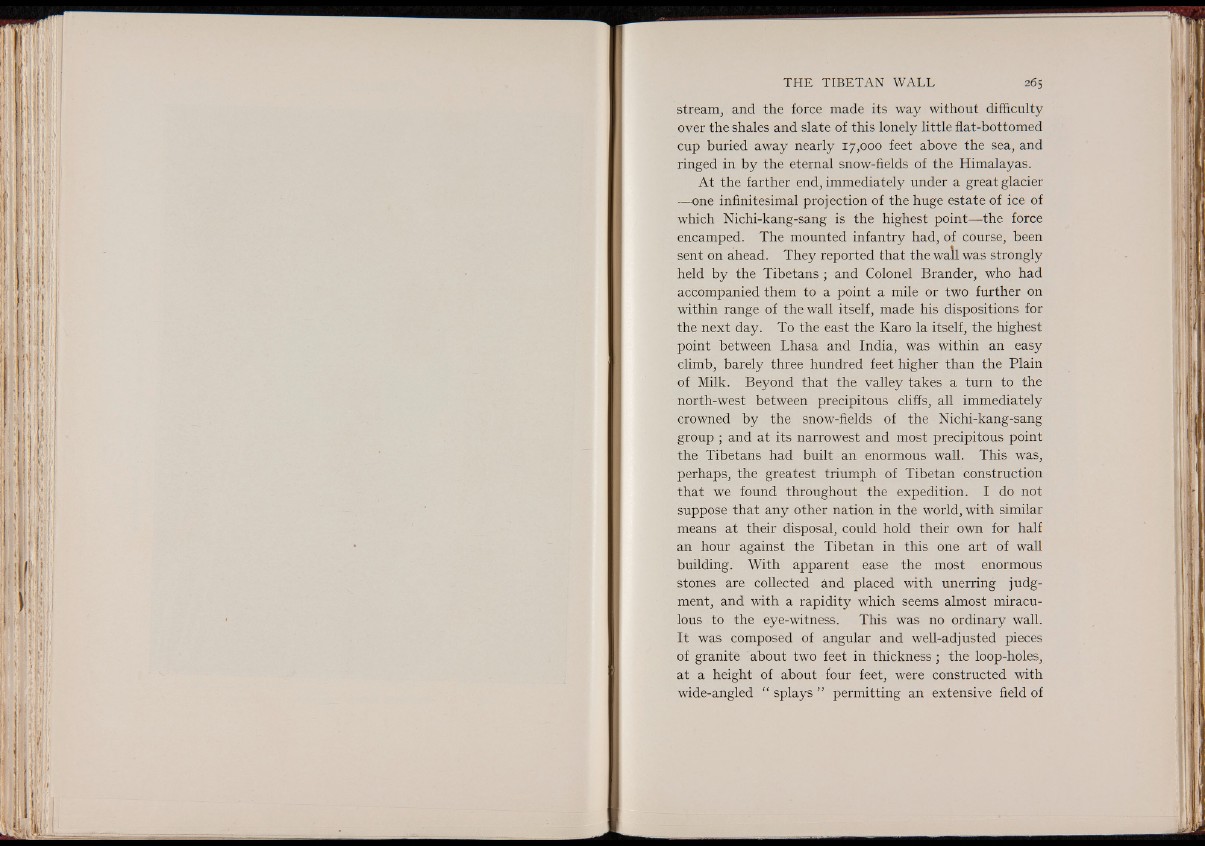
III III!
I1I I11!
if Si i
8 1
i n
i f I f
Bifiil 1l)1
mm nil
Ri 1 1 I
\ I l f
1
I
I
l i yI®
stream, and the force made its way without difficulty
over the shales and slate of this lonely little flat-bottomed
cup buried away nearly 17,000 feet above the sea, and
ringed in by the eternal snow-fields of the Himalayas.
At the farther end, immediately under a great glacier
— one infinitesimal projection of the huge estate of ice of
which Nichi-kang-sang is the highest point— the force
encamped. The mounted infantry had, of course, been
sent on ahead. They reported that the wall was strongly
held by the Tibetans; and Colonel Brander, who had
accompanied them to a point a mile or two further on
within range of the wall itself, made his dispositions for
the next day. To the east the Karo la itself, the highest
point between Lhasa and India, was within an easy
climb, barely three hundred feet higher than the Plain
of Milk. Beyond that the valley takes a turn to the
north-west between precipitous cliffs, all immediately
crowned by the snow-fields of the Nichi-kang-sang
group ; and at its narrowest and most precipitous point
the Tibetans had built an enormous wall. This was,
perhaps, the greatest triumph of Tibetan construction
that we found throughout the expedition. I do not
suppose that any other nation in the world, with similar
means at their disposal, could hold their own for half
an hour against the Tibetan in this one art of wall
building. With apparent ease the most enormous
stones are collected and placed with unerring judgment,
and with a rapidity which seems almost miraculous
to the eye-witness. This was no ordinary wall.
It was composed of angular and well-adjusted pieces
of granite about two feet in thickness; the loop-holes,
at a height of about four feet, were constructed with
wide-angled “ splays ” permitting an extensive field of